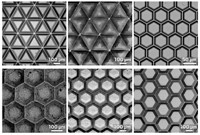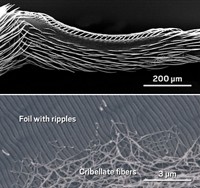Advertisement
Grab your lab coat. Let's get started
Welcome!
Welcome!
Create an account below to get 6 C&EN articles per month, receive newsletters and more - all free.
It seems this is your first time logging in online. Please enter the following information to continue.
As an ACS member you automatically get access to this site. All we need is few more details to create your reading experience.
Not you? Sign in with a different account.
Not you? Sign in with a different account.
ERROR 1
ERROR 1
ERROR 2
ERROR 2
ERROR 2
ERROR 2
ERROR 2
Password and Confirm password must match.
If you have an ACS member number, please enter it here so we can link this account to your membership. (optional)
ERROR 2
ACS values your privacy. By submitting your information, you are gaining access to C&EN and subscribing to our weekly newsletter. We use the information you provide to make your reading experience better, and we will never sell your data to third party members.
Materials
Insects and plants inspire water harvesting surface
Asymmetric bumps and a slippery coating gather and shed droplets of moisture in record time
by Bethany Halford
February 24, 2016
| A version of this story appeared in
Volume 94, Issue 9

Taking inspiration from Namib Desert beetles, cacti, and pitcher plants, scientists have created a water-harvesting surface that condenses moisture six times faster than state-of-the art synthetic surfaces. The new surface could be used for heat exchange, dehumidification, and desalination applications.
When collecting water from the air, synthetic or natural surfaces tend to be good at either condensing droplets or shedding them, but not both. Researchers at Harvard University, led by Joanna Aizenberg and Kyoo-Chul Park, reasoned they could achieve both efficient collection and shedding by combining lessons they’d learned from Nature.
The researchers created a surface with millimeter-sized asymmetric bumps (Nature 2016, DOI: 10.1038/nature16956). The bumps are modeled after those on the backs of Namib Desert beetles, which help the insects collect water in their dry home climate. Aizenberg and Park’s team decided to make the bumps asymmetric based on the asymmetric spines cacti use to efficiently transport water. Finally, the researchers took inspiration from the pitcher plant’s molecularly smooth surface and applied a nanocoating of either mineral oil or polydimethylsiloxane to the bumps to make water drops move faster.
While any one of the three aspects they combined would have improved an existing water-harvesting surface, it’s the synergy of all three that’s key to the surface’s success, Aizenberg notes. “This paper shows that a complex bioinspired approach, in which we marry multiple biological species to come up with non-trivial designs for highly efficient materials, is a new, promising direction in biomimetics,” she says.
The team used aluminum to create the surface for the publication, but Aizenberg tells C&EN they have also fashioned it out of polymers and conducting materials. “The surface can be made of any material. We clearly demonstrate that the major contribution is geometry,” she points out.
“This beautiful experiment shows that artificial surfaces inspired by nature can lead to new properties,” comments Daniel A. Beysens, an expert in water-harvesting systems at ESPCI-PMMH. The next step, he says, is to make the surfaces withstand wear and tear caused by the elements.





Join the conversation
Contact the reporter
Submit a Letter to the Editor for publication
Engage with us on Twitter